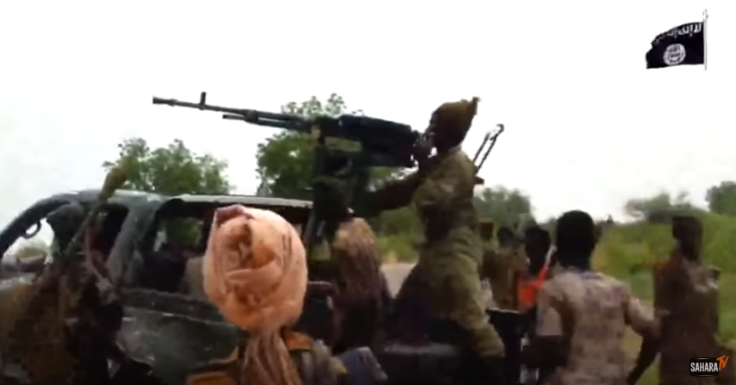Nigerian Boko Haram kidnaps policewomen 'to serve as slaves'
Boko Haram releases video through journalist Ahmad Salkida claiming responsibility for abduction and ambush.

Nigeria-based terror group Boko Haram is believed to have released a video confirming the abduction of policewomen in the country's north-east in June.
The video was released through Nigerian journalist Ahmad Salkida, who has close connections to some members of the group.
Suspected Boko Haram militants ambushed a 200-vehicle convoy after fighting with security forces, resulting in at least two deaths. The incident occurred in the restive Borno state, on a highway connecting Borno's capital Maiduguri to Damboa town, on Tuesday (20 June).
The 16-minute-long video, also posted on YouTube, features Abubakar Shekau, leader of one the group's factions, revealing that several female officers – believed to be less than 10 – were abducted during the raid in Borno.
The footage also shows scenes of fighting, presumably of the attack that preceded the abduction.
"I want to tell you that we are the one that attacked the convoy, here are the vehicles for all to witness, we are the ones that abducted the female police officers, in fact, they are senior female police officers," Shekau says in the video, according to Sahara Reporters.
"What we did is nothing when compared to our women, children, and friends that have been wiped out or arrested for many years by the Nigerian government. We only abducted them to serve as slaves to us," the leader, who spoke in the local Hausa language, continued.
The Nigeria Police Force has not responded to a request for comment.
Boko Haram has already released videos through Salkida, believed to have had close ties with Boko Haram late leader, Mohammed Yusuf .
Last year, the army said Salkida , a Nigerian lawyer and a Nigerian activist were wanted due to their "close ties with Boko Haram" terrorists.
The army also alleged the three people were "in possession of information" regarding the whereabouts of schoolgirls kidnapped by the group in the village of Chibok, Borno state, in April 2014.
In August 2016, Boko Haram released, through Salkida, a video purportedly showing hundreds of schoolgirls held captive.
Nigeria up close: Check out our Flipboard magazine
Fight against Boko Haram
Boko Haram fights against Western influence in Nigeria and aims to impose its version of Sharia law throughout occupied territories. In 2016, the group officially allied with Isis.
The area where the ambush took place is often targeted by Boko Haram militants, who have waged a seven-year-long insurgency against the Nigerian government.
The attack came two days after Boko Haram was accused of killing between eight and 17 people during multiple bomb blasts in a crowded area of Maiduguri, which is the group's birthplace and the epicentre of its insurgency.
The group used to control total territory the size of Belgium. However, Nigeria's ongoing military operation, Lafiya Dole, and a regional offensive – consisting of 8,700 troops from Nigeria, Niger, Chad, Cameroon and Benin – have scored some successes, with soldiers recapturing key territories and releasing thousands of civilians held captive by the group.
Last year, the army claimed it had stormed Boko Haram's last known stronghold in Sambisa Forest, which the group denied.
Earlier this year, a Boko Haram faction released 82 Chibok girls following negotiations that involved several actors, including the Swiss government.
The release suggested there could be further collaboration between the government and the group, now split in at least two factions, after Isis replaced Shekau as leader with Abu Musab al-Barnawi, a former Boko Haram spokesperson.
The country's government and army have often claimed the fight against the insurgents is over, but violence has continued since.
The UN says at least 20,000 people have died in Nigeria and neighbouring states since the Boko Haram insurgency became violent in 2009. The conflict has also displaced at least 2.1 million people.
© Copyright IBTimes 2025. All rights reserved.






















